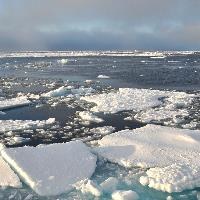(BRUSSELS) – The EU set out Wednesday a strategy for integrating policies on the Arctic region, focusing on climate change, environmental protection, sustainable development and international cooperation.
Unveiling the strategy, the EU’s foreign affairs representative Federica Mogherini and the European Commission underlined the importance of research, science and innovation, and said the EU would step up its existing action and engagement in the region.
They also stressed the fragile nature of the Arctic region, which is being hit from a number of factors, particularly greenhouse gas. The Arctic is warming at a rate double the speed of the rest of the world. This is resulting in rising sea levels and changing weather patterns, while migratory fishing routes, arctic wildlife and marine ecosystems are under ever-increasing pressure.
Outlining the plans, Ms Mogherini underlined the environmental, social, and economic importance of the region. “The steps taken today underline our commitment to the region, its States and its peoples”, she said, “and to ensuring that the region remains an example of constructive international cooperation. Because the Arctic is also crucial in terms of regional and global security, and a strategic component of our foreign policy.”
The Communication is about the European Union “putting a soft footprint in the Arctic snow”, said Environment Commissioner Karmenu Vella. “We impact on the Arctic and the Arctic impacts on us. Global weather patterns, our oceans, ecosystems and local biodiversity the Arctic influences them all. While increasing human development is inevitable, it is in our hands to do it in a sustainable way. We have to do this in full respect of the livelihoods of those who live in the region and by protecting its most valuable resource: the environment.”
The Joint Communication takes into account existing EU legislation, including the commitment to reduce greenhouse gas emissions, as well as ongoing and forthcoming EU activities and projects. It also builds on and complements the Arctic policies of the EU Member States.
The Arctic policy has three main pillars, said the Commission.
The first is climate change, with EU work in the Arctic being seen as an important part of how the EU faces the challenge of climate change and how it can help to avoid major catastrophes in the world.
The second pillar is economic and social development – where the EU makes sure that development of the area, which has a huge economic potential, is done in a sustainable way, and that there is a social part to it – specifically with regard to the conditions of the indigenous people, and the need to ensure that development of the region is undertaken in a sustainable way.
Finally, the EU makes clear its acknowledgement of the fact that the Arctic is a key strategic region for EU foreign and security policy. Ms Mogherini said it is the only place in the world where 3 continents and the major players in the world, meet: Russia, the United States, Canada and several European countries that are not members of the EU.
Mr Vella highlighted the fact that European companies are developing innovative cold climate technologies. These include farm fishing techniques for the Arctic region, as well as clean energy advances.
He also said the European actions show a commitment to sustainable development of the region, as well as a commitment the four million, mostly indigenous people who live there.
This approach, he added, is the EU’s contribution to forming a modern economic model which has environmental protection, sustainable development and international cooperation at the very heart of this development.
The proposed actions will now be discussed with the EU Member States in the Council and the European Parliament.
Further information
Commission memo: Frequently Asked Questions


